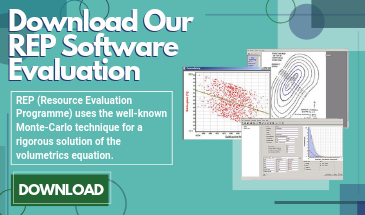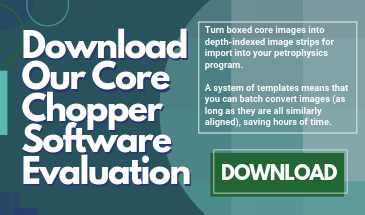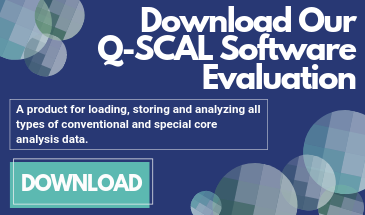Blog
Why Do People Distrust Probabilistic Methods In Hydrocarbon Exploration?

Once upon a time I was at a show in Dallas, and I asked an amiable explorer whether he’d like a demo of our hydrocarbon exploration program REP. He said no, his company was too small to take risks. Perhaps he was joking, or perhaps the idea of half an hour looking at a piece of oil and gas estimation software was too grim to contemplate. But I think he was a decade ahead of all of us in the game of fake news – and the big lie.
Oil and gas exploration is full of risk and full of uncertainty – that’s commonplace. Some people argue that uncertainty is the one to wrestle with; risk is just the act of placing your money on your judgement of it. It’s a pretty good definition and points the way forward: if you want to minimise the risk, understand the uncertainty. And to do this, use the best possible tools.
So why don’t people in the petroleum industry use the best tools? It’s a mystery – or maybe not.
Of course, I’m going to argue that we need to be using probabilistic methods, because I would, wouldn’t I? Setting aside any bias I might have towards our own oil and gas software I can say with hand on heart that it isn’t because I am the great genius of the age. It’s because I recognise that great geniuses of other ages have developed the technique to cope with exactly the sort of problems that we face in the petroleum industry.
One of the earliest pioneers was Abraham de Moivre (at least in Europe – it would surprise no-one to discover that he was merely re-realising the work of some unknown predecessor, centuries before, in Baghdad). He was a French protestant who came to London in the 1680s to escape religious persecution. De Moivre never discovered any oil, but he was a friend of Isaac Newton, which in anyone’s book is exalted company.
In 1801 Carl Gauss used probability to predict the orbit of Ceres, based on the very few measurements made before it was obscured by the sun. It made him famous throughout Europe, and he is remembered as one of the greatest of all mathematicians.
His ideas were continuously developed though the 19th and 20th centuries, and it is true to say that probabilistic methods are at the heart of many forms of scientific and industrial endeavour. When we were developing REP we used the safety case of the Dounreay nuclear reactor as a guide to how to get going with probability distributions and Monte-Carlo methods. We probably didn’t need to – at the level needed in the exploration and production industry the maths is pretty straightforward, and the challenge is all in the presentation.
In short, probabilistic methods have been around for centuries, have been developed by some of the greatest minds of civilisation, and are used extensively throughout the modern world. Their purpose is to provide a formal method of handling uncertainty, in whatever form it happens to come.
One key document in the petroleum industry is PRMS, standing for Petroleum Resources Management System. It’s produced jointly by several industry professional societies (including SPE, AAPG and EAGE) and is widely used as the standard reporting template for petroleum resources. It’s important, not least because the reports that a company make are the basis for its stock market or other valuation. It really matters.
PRMS has a nice little diagram showing how a resource will move through the reporting system. You start with an exploration project, full of uncertainty – it might not even have hydrocarbons. But you discover it, appraise it, do economic studies, decide how to produce it and so on – and as time goes by, the uncertainty becomes less, and the likelihood of commerciality increases. The diagram is like a graph, with one axis representing increasing chance of commerciality and the other decreasing levels of uncertainty.
Uncertainty! You’d think the ghosts of de Moivre, Gauss and friends would cock an ear. But PRMS doesn’t have much time for these minnows of mathematics. P90, P50 and P10 are OK for exploration – such a mine of flakiness – but when it comes to discoveries, these probabilistic methods need to be checked and validated against good old deterministic values, which are obviously (obviously!) far better measures.
In the deterministic method, you take each parameter (reservoir thickness, porosity, etc.) and decide a low, best, and high case. You then multiply all the lows, all the middles, and all the highs and come up with a low, a middle, and a high outcome.
PRMS says that if you are using probabilistic methods low, best and high are equivalent to P90, P50, P10. But if you are not using probabilistic methods, then this sort of precision is not applicable. Low is “conservative”, best is “realistic” and high is “optimistic”.
The 2011 version of PRMS really liked the deterministic method. “The method is direct, easy to explain, and manpower efficient. The estimate is reproducible. Because of the last two advantages, investors and shareholders like this method, and it is widely used to report Proved Reserves for regulatory purposes.” Wiser councils prevailed in 2018 and this extraordinary statement was removed.
You can also use the deterministic method when aggregating resources – what REP calls consolidation – or adding up. PRMS notes that when you aggregate, probabilistic methods tend to give higher P90s and lower P10s than arithmetic summation. They put it down to “Portfolio Effect”, proclaiming it “the result of the central limit theorem in statistical analysis”. They do not ask the reader to consider, and apparently have not asked themselves either, whether one may be mathematically correct and the other seriously misleading. In their eyes it seems that “Portfolio Effect” is some sort of frightful infectious disease, and the central limits theorem (first proposed by de Moivre, as it happens) is an international conspiracy designed to end the annual bonus and associated stock options as we properly know them.
And there I touch on a possible reason why the work of great men and women is so happily dismissed, why methods that lie at the heart of so much endeavour and progress are so readily ignored.
To be discussed further in later posts…
Image source: Unsplash




